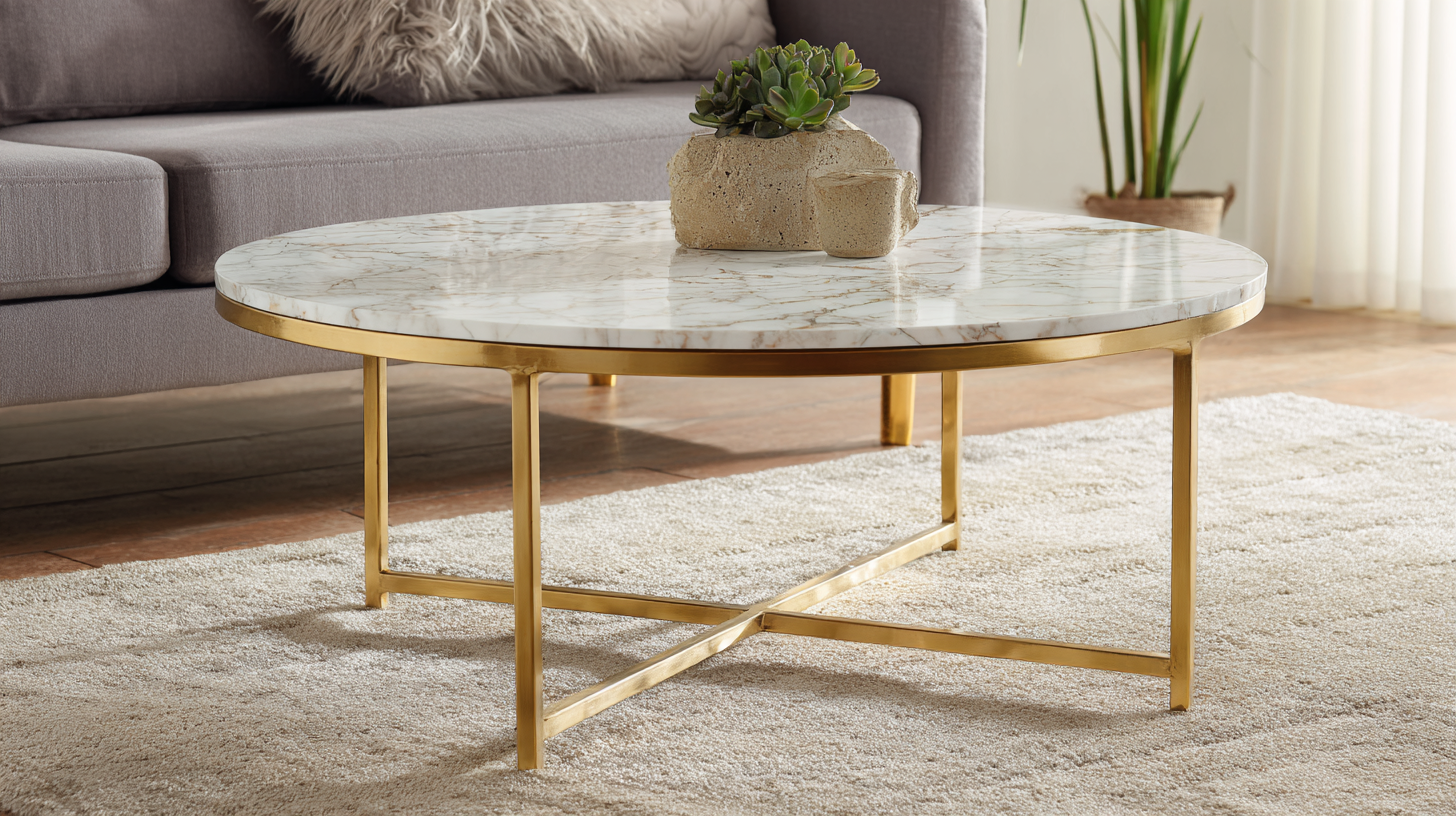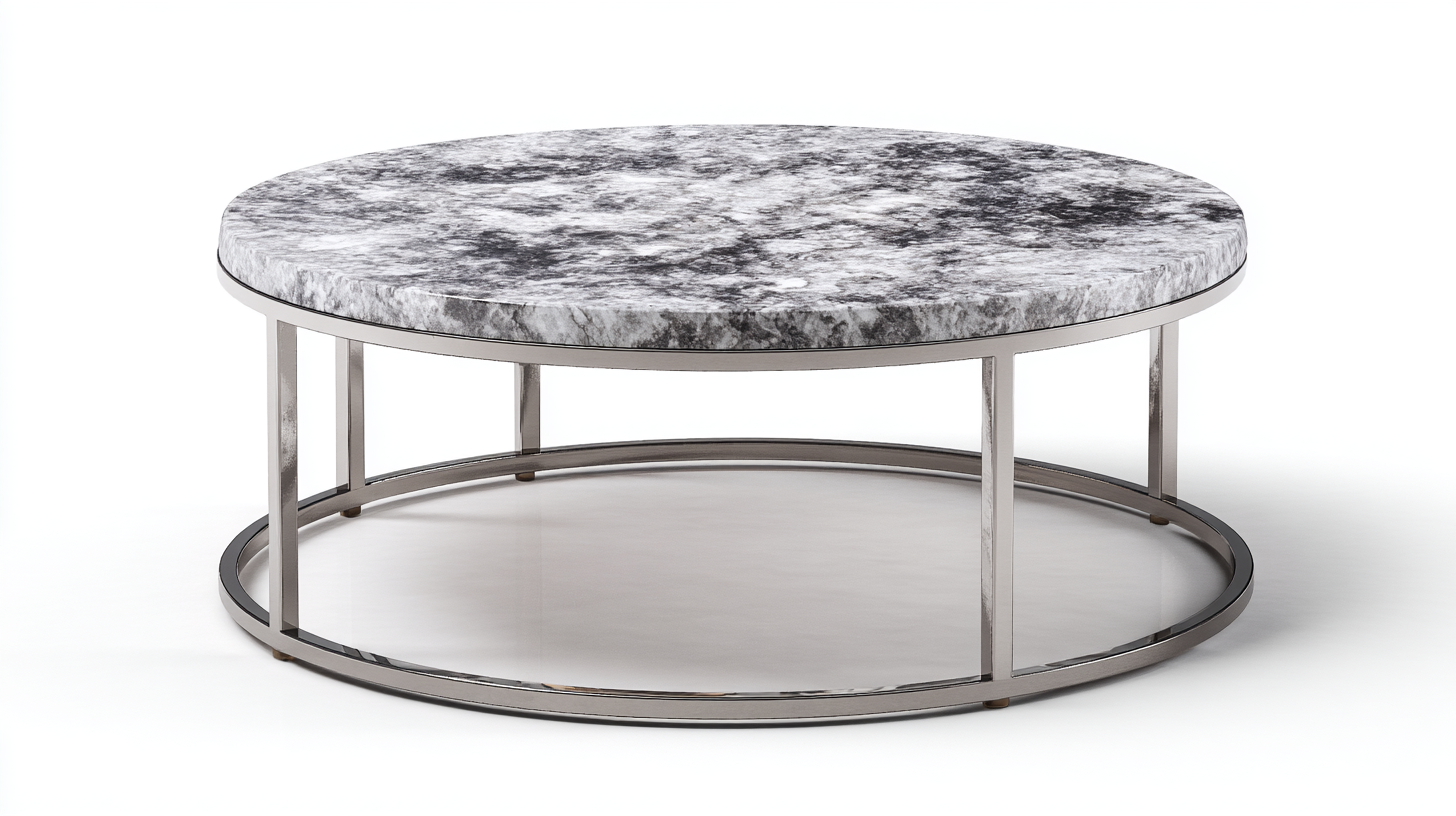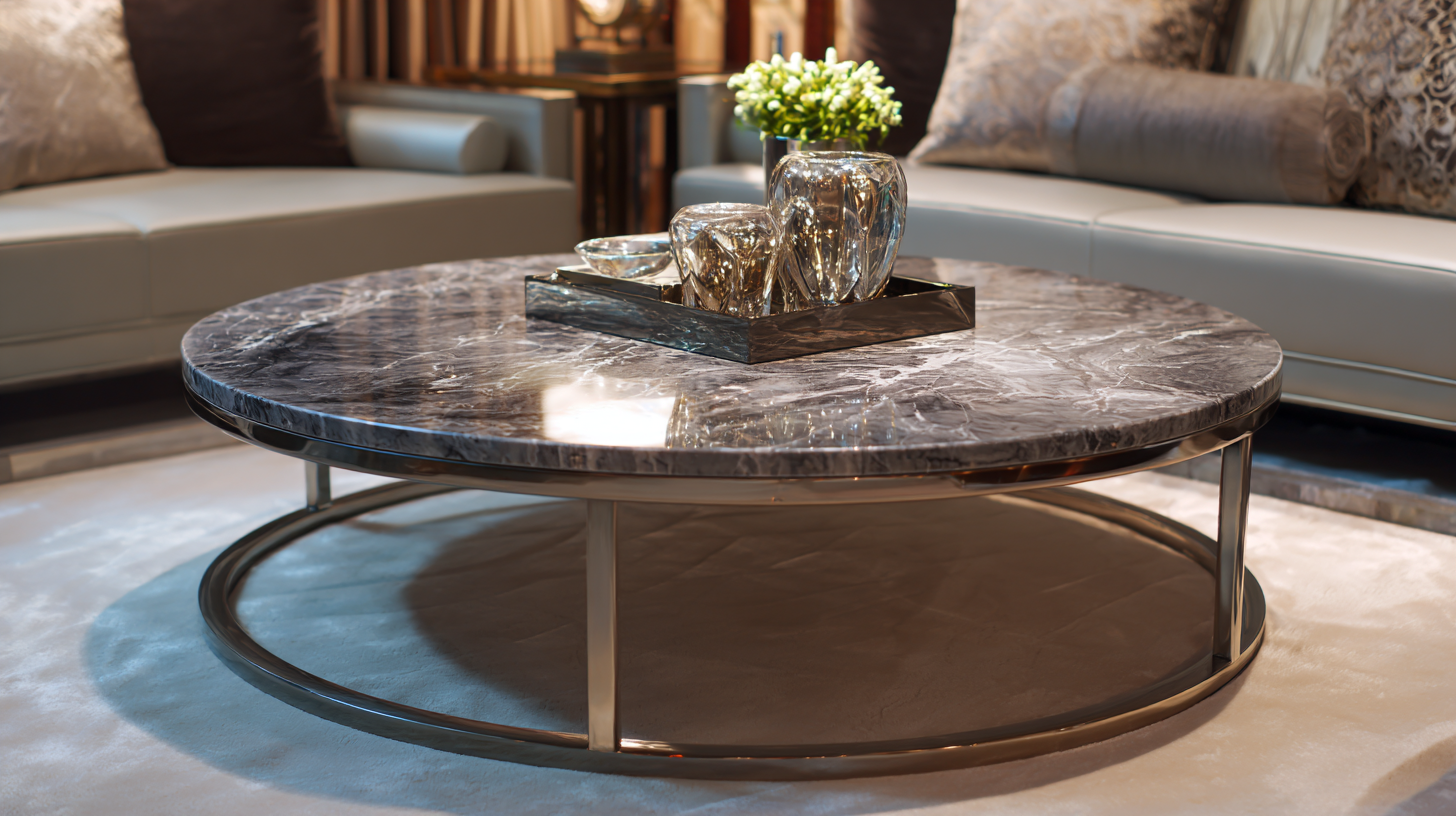
Blog
Exploring the Top 5 Best Marble Round Coffee Tables: A Comprehensive Comparison for Global Buyers
In recent years, the demand for stylish and functional furniture pieces, such as the
Marble Round Coffee Table, has significantly increased,
with the global furniture market expected to reach $730 billion by 2024. This surge is attributed to a
growing preference for aesthetic and durable materials in interior design, particularly among millennials and urban consumers
who prioritize both style and practicality.
 Marble, known for its elegance and timeless appeal, has become a favored material, offering a unique blend of sophistication and longevity.
According to a report by Market Research Future, the coffee table segment alone is projected to witness a
compound annual growth rate (CAGR) of 5.6% between 2021 and 2027.
As buyers worldwide navigate through the vast array of options available, understanding how to identify
quality suppliers and the top strategies for sourcing premium Marble Round Coffee Tables is essential for making informed
purchasing decisions.
Marble, known for its elegance and timeless appeal, has become a favored material, offering a unique blend of sophistication and longevity.
According to a report by Market Research Future, the coffee table segment alone is projected to witness a
compound annual growth rate (CAGR) of 5.6% between 2021 and 2027.
As buyers worldwide navigate through the vast array of options available, understanding how to identify
quality suppliers and the top strategies for sourcing premium Marble Round Coffee Tables is essential for making informed
purchasing decisions.
Emerging Trends in Marble Round Coffee Tables for Global Buyers in 2025
As we approach 2025, the design landscape for marble round coffee tables is evolving to meet the changing preferences of global buyers. One of the prominent trends is the integration of sustainable materials alongside natural marble, reflecting the growing demand for eco-friendly furnishings. Designers are now experimenting with recycled bases and sustainable sourcing of marble, offering products that are not only luxurious but also environmentally responsible.
Another emerging trend is the customization of marble round coffee tables. More consumers are seeking personalized pieces that reflect their unique aesthetic. Manufacturers are responding by providing options for customized marble patterns, colors, and sizes, allowing buyers to tailor their furniture to fit their specific décor needs. This trend of personalization extends to the choice of legs and base materials, with options like metal, wood, or even acrylic, which create a striking contrast to the elegance of marble.
Additionally, we are witnessing a shift towards minimalistic designs that emphasize simplicity and functionality. Clean lines and understated designs make these coffee tables versatile, fitting seamlessly into various interior styles—from modern to rustic. This trend caters to a fast-paced lifestyle where function meets form, making marble round coffee tables not just a decorative piece, but a practical element in everyday living spaces.
Comparative Analysis of Materials: Natural vs. Engineered Marble Options
When it comes to choosing the perfect marble round coffee table, the material plays a pivotal role in both aesthetics and durability. Natural marble, known for its unique veining and rich textures, has been the traditional choice for many buyers. Data from the Research Institute of Stone Industry indicates that the demand for natural marble is projected to grow by 4.5% annually, reflecting its lasting appeal. Its timeless beauty can enhance any living space, making it a sought-after option for homeowners. However, this type of marble is susceptible to scratching and staining, which may require regular maintenance to keep its luster.
On the other hand, engineered marble, a composite material made from crushed stone and resins, offers several advantages. Reports from the International Marble Commission suggest that engineered marble has seen a surge in popularity, with market growth expected to reach 6.3% over the next five years. Its non-porous surface makes it resistant to spills and stains, making it an excellent choice for high-traffic areas. Furthermore, engineered marble can mimic the appearance of natural stone while allowing for more consistent patterns and colors, appealing to modern design sensibilities. As global buyers weigh their options, understanding the differences between natural and engineered marble will be crucial in making an informed decision for their coffee table needs.
Comparison of Marble Types in Coffee Tables
This bar chart compares the average price per square foot of natural and engineered marble used in coffee tables. Natural marble tends to be more expensive due to its rarity and extraction costs, while engineered marble offers a cost-effective alternative with more uniformity in appearance.
Design Aesthetics: How Marble Round Tables Adapt to Modern Living Spaces
 Marble round coffee tables have become a staple in contemporary living spaces, revered for their elegant design and timeless appeal. The natural veining and polished surface of marble bring a touch of luxury, making it an ideal centerpiece for modern decor. With their soft curves, round tables soften the sharp lines often found in furniture, contributing to a more inviting atmosphere. Homeowners can effortlessly integrate these tables into various styles, from minimalist to eclectic, enhancing the overall look of their spaces.
Marble round coffee tables have become a staple in contemporary living spaces, revered for their elegant design and timeless appeal. The natural veining and polished surface of marble bring a touch of luxury, making it an ideal centerpiece for modern decor. With their soft curves, round tables soften the sharp lines often found in furniture, contributing to a more inviting atmosphere. Homeowners can effortlessly integrate these tables into various styles, from minimalist to eclectic, enhancing the overall look of their spaces.
When selecting a marble round coffee table, consider pairing it with contrasting materials to create visual interest. For instance, a table made of marble can be beautifully complemented by a rustic wooden sofa or metal accent chairs. Additionally, pay attention to the size and scale; a larger table can serve as a focal point for a spacious area, while a smaller version works well in cozy nooks.
To keep your marble table looking pristine, it's essential to follow some care tips. Regularly clean the surface with a gentle, non-acidic cleaner to prevent etching and discoloration. Finally, be mindful of placing coasters under drinks to avoid water rings and heat damage, thus preserving the table's elegance for years to come.
Price Range Breakdown: What to Expect in 2025 for Marble Coffee Tables
As we look forward to 2025, the price range for marble coffee tables is expected to significantly evolve, influenced by design trends and material sourcing. Currently, premium marble coffee tables feature price points ranging from $500 to $2,000, depending on the size, style, and brand. With the rise of minimalist aesthetics and multifunctional furniture, many retailers are innovating their product offerings, resulting in a broader spectrum of prices to cater to diverse consumer demands.
Data from recent furniture market analyses indicate a projected growth in global sales of coffee tables, particularly those featuring luxurious materials like marble. A report noted that the demand for marble furniture is spurred primarily by millennials investing in home décor, projecting an increase to $1.5 billion in coffee table sales in 2025. This trend underscores the significant role that lifestyle shifts play in shaping market dynamics, as buyers seek not only functionality but also elegance and statement pieces for their living spaces. With more retailers entering the marble segment, it's essential to watch how competition will drive innovative designs and ultimately, pricing strategies.
Exploring the Top 5 Best Marble Round Coffee Tables: A Comprehensive Comparison for Global Buyers
| Model | Material | Diameter (inches) | Price Range (2025) | Customer Rating (out of 5) |
|---|---|---|---|---|
| Classic White Marble | Marble with Metal Base | 36 | $300 - $500 | 4.5 |
| Elegant Black Marble | Black Marble with Wooden Legs | 30 | $350 - $550 | 4.7 |
| Modern Grey Marble | Grey Marble with Glass Top | 34 | $400 - $600 | 4.6 |
| Vintage Brown Marble | Brown Marble with Iron Frame | 32 | $250 - $450 | 4.4 |
| Artistic Round Marble | Decorative Marble with Sculpted Base | 28 | $500 - $750 | 4.8 |
Sustainability in Marble Coffee Table Production: Eco-Friendly Innovations
Sustainability is becoming increasingly important in design and manufacturing, and the production of marble coffee tables is no exception. As consumers become more environmentally conscious, manufacturers are stepping up their efforts to reduce their ecological footprint. Innovations in sourcing and processing marble are at the forefront of these changes. Many brands now prioritize using reclaimed marble, which not only helps preserve natural resources but also adds unique character to their products. This approach minimizes waste and demonstrates a commitment to sustainable luxury.
Additionally, advancements in production techniques are enhancing the eco-friendliness of marble coffee tables. Companies are adopting energy-efficient methods and reducing harmful emissions during processing. The use of non-toxic adhesives and finishes is becoming more common, ensuring that the final product is safe for both consumers and the environment. As a result, buyers can enjoy elegant, timeless designs without compromising on their values. This shift towards sustainability not only safeguards the planet but also fosters a more responsible approach to luxury home decor.

